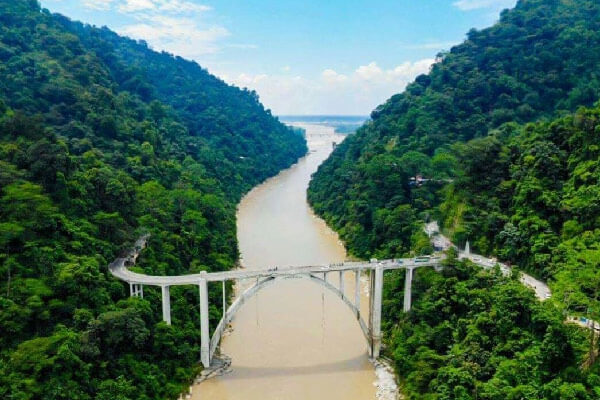Introduction to Siliguri’s Climate
Located near the base of the Himalayas is Siliguri, a lively city in West Bengal, India, noted for its distinct weather patterns. For tourists, locals, and businesses, understanding Siliguri’s weather is vital. This detailed guide explores Siliguri’s weather, providing helpful information for those planning a visit or who want to comprehend this active city’s climate. Here’s a Seasonal Overview of Siliguri Weather.
Seasonal Overview of Siliguri Weather
Summer Season: Warm and Humid
From April to June, Siliguri has a summertime marked by warmth with temperatures that can spike to 35°C. At this time, the city has a humid environment, causing the weather to feel more heated than the thermometer reads. This period sees Siliguri and its abundant vegetation at their most vibrant, offering beautiful scenes.
Monsoon: The Rainy Retreat
From July to September, Siliguri witnesses its monsoon season. This period sees heavy rainfall, significantly affecting daily life and travel plans. The average rainfall during these months can be quite high, leading to lush landscapes but also causing occasional inconveniences due to waterlogging in some areas.
Winter: Crisp and Pleasant
Winter in Siliguri, from October to March, is arguably the best time to visit. The weather is pleasantly cool, with temperatures ranging from 8°C to 22°C. This season is perfect for exploring the city and its surrounding attractions without the discomfort of extreme weather conditions.
The Impact of Siliguri Weather on Tourism
Siliguri is a kind of doorway to India’s northeastern states and places like Bhutan. The town’s weather is a big factor in attracting visitors. Cooler months are best for visiting nearby hill stations like Darjeeling and Kalimpong. However, summer and rainy seasons can cause a drop in tourism due to the rough weather.
Understanding Siliguri’s Microclimate
What sets Siliguri apart is its particular microclimate, thanks to being at the foot of the Himalayas. It boasts a unique weather bridging the plains and the hills. This unique spot means weather swings can happen unexpectedly – this can be interesting, but tricky to forecast.
Climate Change and Its Effects on Siliguri Weather
Climate change has started to impact the weather patterns in Siliguri. The city has witnessed shifts in the Shifts in the time and force of seasons, especially the monsoon, mean a lot. They affect farming, people coming to see the sights, and the way folks live their lives here.
Health and Lifestyle Adaptations to Siliguri’s Climate
Adapting to Siliguri’s weather requires awareness and preparation. During summers, staying hydrated and wearing light clothing is advisable. The monsoon season demands caution against water-borne diseases and ensuring proper waterproofing. Winter, while pleasant, can sometimes require warm clothing, especially in the evenings.
Annual Weather Events and Cultural Significance
Siliguri’s weather influences its cultural scene too. Fall brings Durga Puja, spring ushers in Saraswati Puja, and the excitement around these festivals is high. The start of new seasons welcomes religion-based celebrations, giving the city a unique personality.
Tips for Travelers: Navigating Siliguri Weather
For travelers, understanding Siliguri’s weather patterns is vital. It’s recommended to check weather forecasts regularly and plan activities accordingly. Carrying appropriate clothing and gear for the season can significantly enhance the travel experience.
Conclusion: Embracing the Diversity of Siliguri Weather
Weather changes in Siliguri, showing clear seasonal shifts, enhance the city’s allure. Each season, from refreshing monsoon, cool winter, to warm summer, gifts a special charm. By knowing and enjoying these weather shifts, one can take in Siliguri’s breath-taking beauty.



1 Comment
Pingback: How do you make an ant farm for kids? A Step-by-Step Guide - Newswala